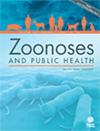Molecular detection of intestinal parasites in a rural community of Colombia: A one health approach to explore potential environmental–zoonotic transmission
Abstract
Aims
Protozoan and helminth parasitic infections pose significant public health challenges, especially in developing countries with rural populations marked by suboptimal hygiene practices and socio-economic constraints. The parasites are the etiological agents of these infections and have a notably elevated global prevalence. Therefore, this study focuses on estimating the frequency and transmission dynamics of several parasitic species, including Blastocystis, Giardia, Cryptosporidium spp., Entamoeba histolytica, Ascaris lumbricoides, Trichuris trichiura, Taenia spp. and hookworms, within a rural community in southwest Colombia with a particular emphasis on the One Health framework, considering environmental and zoonotic transmission potentials.
Methods and Results
This study involved the analysis of 125 samples, encompassing human participants (n = 99), their domestic pets (dogs) (n = 24) and water sources (n = 2). Parasite detection was carried out utilizing a combination of microscopy and molecular techniques. Furthermore, the characterization of Blastocystis subtypes (STs) was achieved through Oxford Nanopore sequencing of the rRNA-18S gene. The investigation also entailed the examination of potential associations between intestinal parasitism and various sociodemographic factors. Results revealed a high frequency of parasitic infections when employing molecular methods, with Blastocystis (n = 109/87%), Giardia (n = 20/16%), Ancylostoma duodenale (n = 28/22%), Ancylostoma ceylanicum (n = 7/5.6%), E. histolytica (n = 6/4.8%), Cryptosporidium spp. (n = 12/9.6%) and even Taenia (n = 1/0.8%) detected. Cryptosporidium spp. was also identified in water samples. Coinfections were prevalent, with 57% (n = 70) of samples exhibiting single-parasite infections and 43% (n = 53) showing various degrees of polyparasitism, emphasizing the complexity of transmission dynamics. Blastocystis subtyping, conducted via Oxford Nanopore sequencing, revealed a diversity of subtypes and coexistence patterns, with ST2 being the most prevalent.
Conclusions
This research underscores the importance of using molecular techniques for frequency estimation, particularly emphasizing the relevance of zoonotic transmission in parasitic infections. It highlights the significance of the One Health approach in comprehending the circulation of parasites among animals, humans and environmental sources, thereby directly impacting public health and epidemiological surveillance.

 求助内容:
求助内容: 应助结果提醒方式:
应助结果提醒方式:


